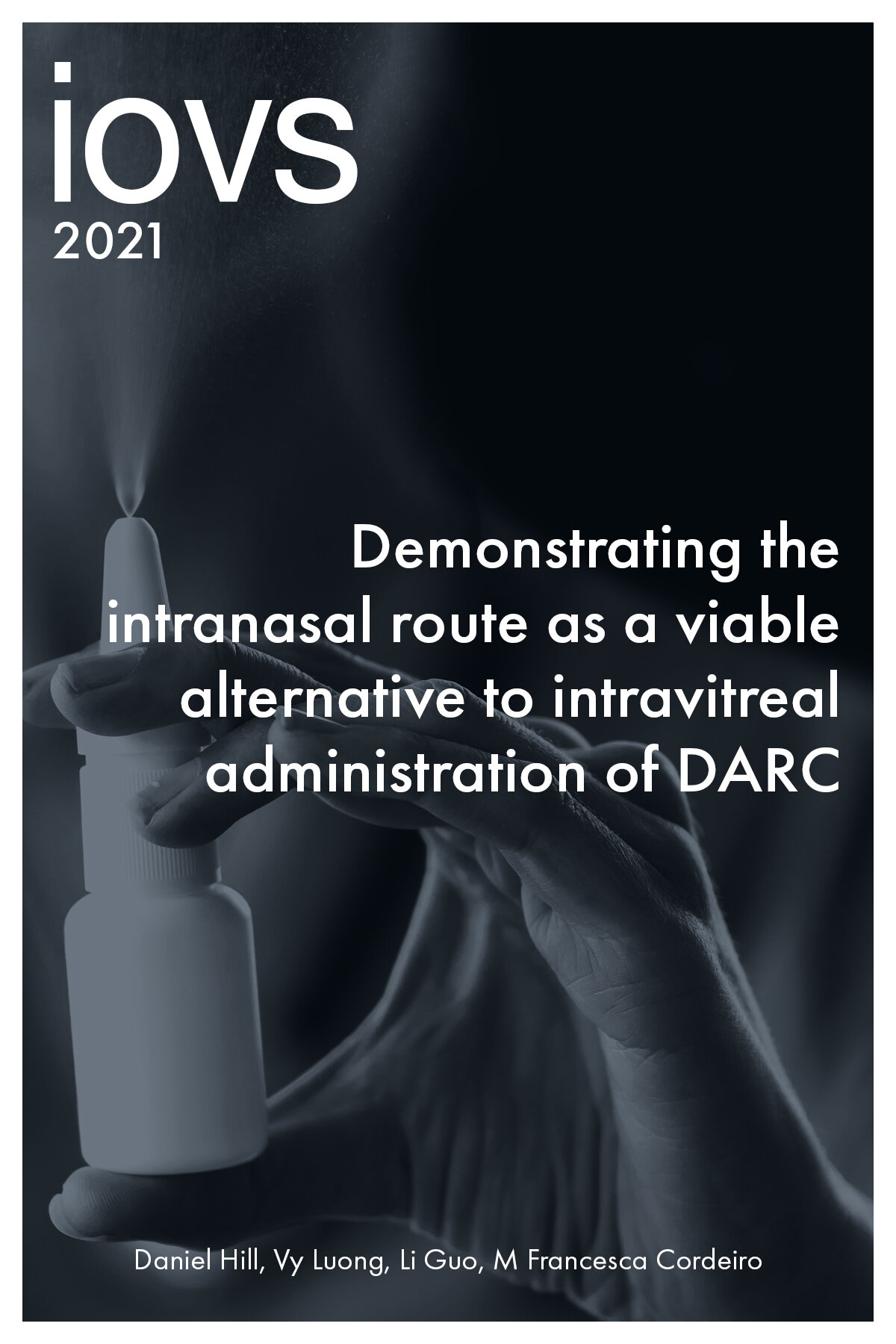Intranasal Formulation
Abstract
Purpose : DARC (detection of apoptosing retinal cells) is an annexin-based technology that fluorescently marks stressed and dying cells in the retina, allowing in vivo assessment of retinal pathology using a confocal laser scanning ophthalmoscope. As the retina is an integral part of the central nervous system, imaging intravitreally-injected DARC facilitates a unique in vivo assessment of neuronal health which is applicable to a wide range of neurodegenerative animal models. To reduce discomfort associated with intravitreal administration and potential complications, we investigated whether intranasal delivery of fluorescent annexin can be used as an alternative route in DARC treatment.
Methods : 10 female 3xTg transgenic Alzheimer’s disease (3xTg-AD) model mice were used as a model of retinal cell death and 10 C57 mice were used as healthy controls (all animals from The Jackson Laboratory). Intranasal administration of DARC involved restraining the animal and carefully administering 5 µL of aqueous-buffered DARC to each nostril, using a p20 pipette. Retinas were imaged at baseline and 2 hours after intranasally administered DARC, in vivo, at the 488 nm wavelength, using a Multiline Spectralis OCT. After in vivo imaging, animals were sacrificed, and the retinas were extracted, fixed, and imaged with fluorescent microscopy. Automated spot counts were collected for both in vivo and ex vivo images.
Results : Administration of DARC via the intranasal route allowed discrimination between healthy and diseased animals both in vivo and ex vivo (significantly higher spot count in disease; p<.05) and produced images of similar quality (fluorescence brightness and definition) to those acquired from intravitreally administered DARC retinas. It was found that a higher intranasal DARC dose was required compared to intravitreal administration (approximately 10-fold increase).
Conclusions : The intranasal route has been demonstrated as a viable alternative to intravitreal administration of DARC, thus helping to refine animal procedures to minimise discomfort. Future work should focus on optimising an intranasal buffer to enhance delivery and reduce necessary DARC dose, followed by expansion to rat models. In the long term, standardisation of administration route to intranasal across animal and human applications may help to improve the applicability of DARC-enabled animal experiments to the clinic.

